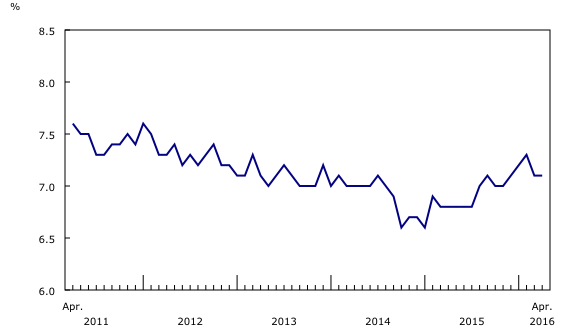Canadian economy continued defying economists’ expectation by shedding manufacturing jobs in April even as the lower Canadian dollar was supposed to boost employment in the manufacturing sector.
Canada lost 2,100 jobs in April, and the unemployment rate stayed steady at 7.1 per cent, according to Statistics Canada.
Growth in wholesale and retail trade sectors were mostly responsible for job gains in the service sector, which added 35,000 new jobs, in April. But that was offset by a large drop in goods-producing industries.
“Every category in the goods sector was down,” Scotiabank said, “led by 16,500 fewer manufacturing jobs, but with construction (down 5,700), resources (down 7,800), agriculture (down 7,000) and utilities (down 200 jobs) also not helping.”

Source: Statistics Canada
Alberta leads job losses
The western province of Alberta, once Canada’s economic engine, lost 20,800 jobs in April — more than all the other provinces combined.
But Alberta’s drop was slightly offset in the national figure by a gain of 13,000 jobs in neighbouring British Columbia. The province’s unemployment rate fell 0.7 percentage points to 5.8%—the lowest rate among the provinces.
“This is the first time that British Columbia has had the lowest unemployment rate among all the provinces since comparable data became available in 1976,” Statistics Canada report said.
Newfoundland and Labrador added 6,100 jobs, and the unemployment rate edged down to 12.5 per cent. New Brunswick added 3,900 jobs, and the unemployment rate fell 0.6 percentage points to 9.6 per cent. Employment was essentially unchanged in Ontario and Quebec







For reasons beyond our control, and for an undetermined period of time, our comment section is now closed. However, our social networks remain open to your contributions.